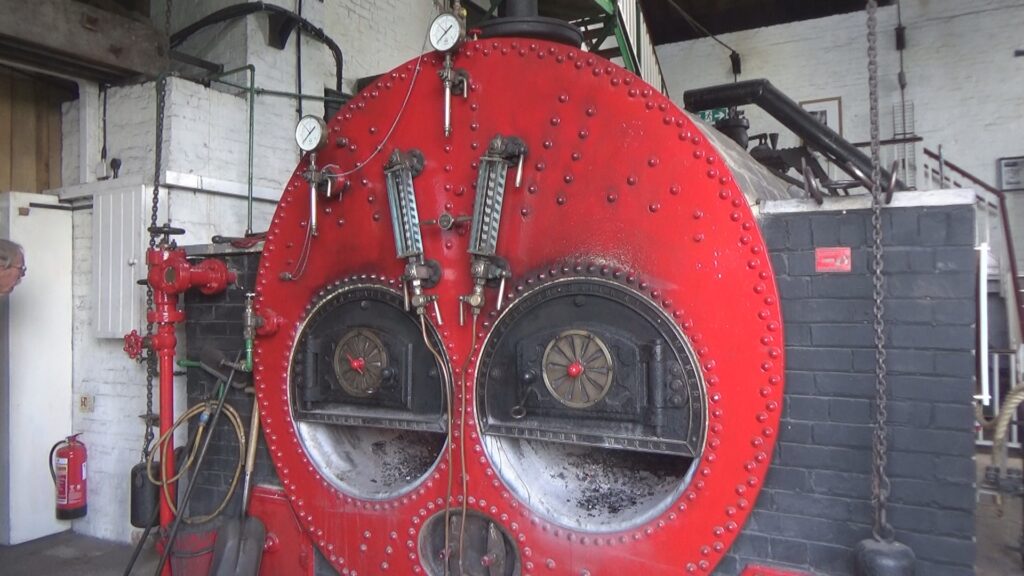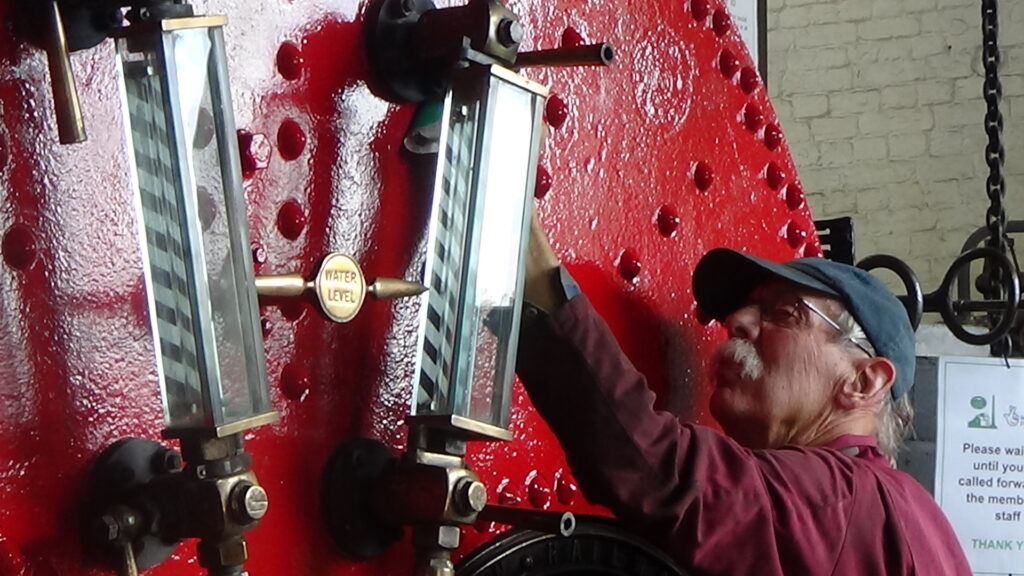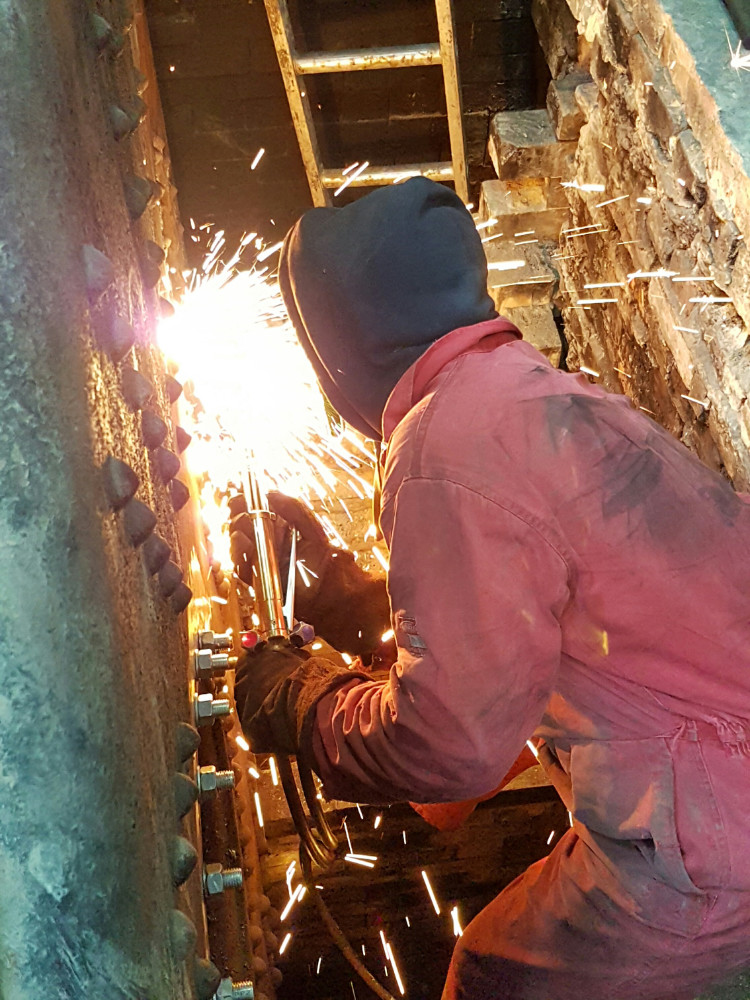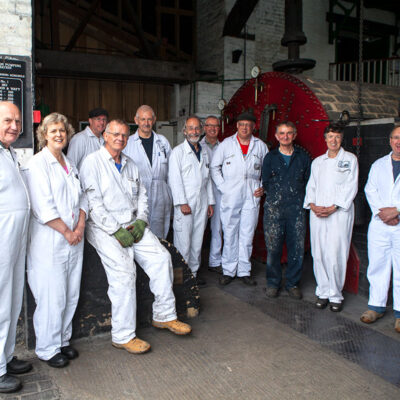How old is the boiler?
The boiler now in use to produce the steam to power our two engines was built in 1899. It was acquired from the Imperial Tobacco factory in Bristol, and commissioned at Crofton in May 1987. It replaced a boiler installed by the Great Western Railway (which then owned the Canal) in the early years of the 20th century which had failed a safety inspection and was not considered to be repairable.
Although our boiler operated at a working pressure of 125 psi (pounds per square inch) during its original working life, the Crofton engines operate at a much lower pressure, and we normally work at around 18 psi. The safety valve is set to operate at 20 psi.




What work has been done previously?
The boiler is subject to an annual ‘in steam’ inspection to ensure that it is safe to operate. Every ten years it undergoes a full hydraulic test; as part of the last one, in 2017, it operated at 30 psi for 30 minutes.
The recent survey report summarises the work done to the boiler since it was commissioned at Crofton as follows:
- 1998: Crown valve replaced with an approved cast steel item
- 2002: Non-destructive testing of the Galloway tubes
- 2003: Lamination found in the RH side furnace first ring. Section of plate 38cm deep x 46cm wide replaced.
- 2004: Lamination found in the RH side furnace second ring. Lower section 35mm long x 3.0mm deep.
- 2005: Lamination in RHS side furnace ground out to a depth of 6.00 mm to clear the defect then welded.
- 2007: Lamination found in the RH side furnace eighth. Lamination ground out and welded.
- 2008: Rivets replaced on both furnaces rear lower attachment and rear shell stiffeners.
- 2017: Rivets replaced in lower shell circumferential seams, approx. 30 each seam.
- 2017: Patch screws fitted in lower shell circumferential seams, approx. 15 each seam.
- 2017: Rivets replaced in rear furnace attachment to end plate.
- 2017: Non destructive tests. Ultrasonic thickness survey carried out on Galloway tubes and both furnace tube sections.



When will the boiler need further work?
Work undertaken on the boiler previously has mainly been identified through the annual inspections. So it has focused on immediate problems which have to be dealt with if the boiler is to operate in the following season.
We commissioned a full boiler survey to try to identify all the work likely to be needed to keep the boiler operational for the next ten years. This survey was undertaken over two days at the end of May 2021. To enable the surveyor, from British Engineering Services (who also carry our the annual inspection for our insurers), to access all parts of the boiler, preparatory work was undertaken by H A McEwen, who also attended during the survey and even managed to carry out some immediate repairs.
The survey report said that “with the above repairs complete it would be envisaged that the Boiler would require no further major repairs for the next 10 years”, although it naturally added a proviso that “this is completely dependant on the annual inspections in accordance with PSSR 2000 which may detect in-service defects requiring repairs”.
So we are hopeful that we will not need to undertake more than minor repairs for a considerable period – but nothing about the future is certain!
Will restrictions on the sale and use of coal prevent us steaming?
If coal cannot be used, or becomes too expensive, what are the options? This was looked at in 2019 by Beth Wigney, a student from the University of Bath, as part of her final year engineering degree. She looked at a range of fuels in terms of characteristics such as emissions, cost and volume, and their burning characteristics. Her conclusion was that the most promising alternative is bio-coal. There are a number of types being trialled. One, Ecocoal 50 produced by Coal Products Ltd, has been successfully trialled on the narrow-gauge Bure Valley Railway and more recently in traction engines, and others are being developed.
Through its membership of the Association of British Transport and Engineering Museums (ABTEM), Crofton is linked to the Heritage Fuels Alliance and we are considering a trial of bio-coal in our Lancashire boiler.
So we expect the sight and sound – and heat! – of the boiler to be part of the Crofton experience for a good few years yet.












